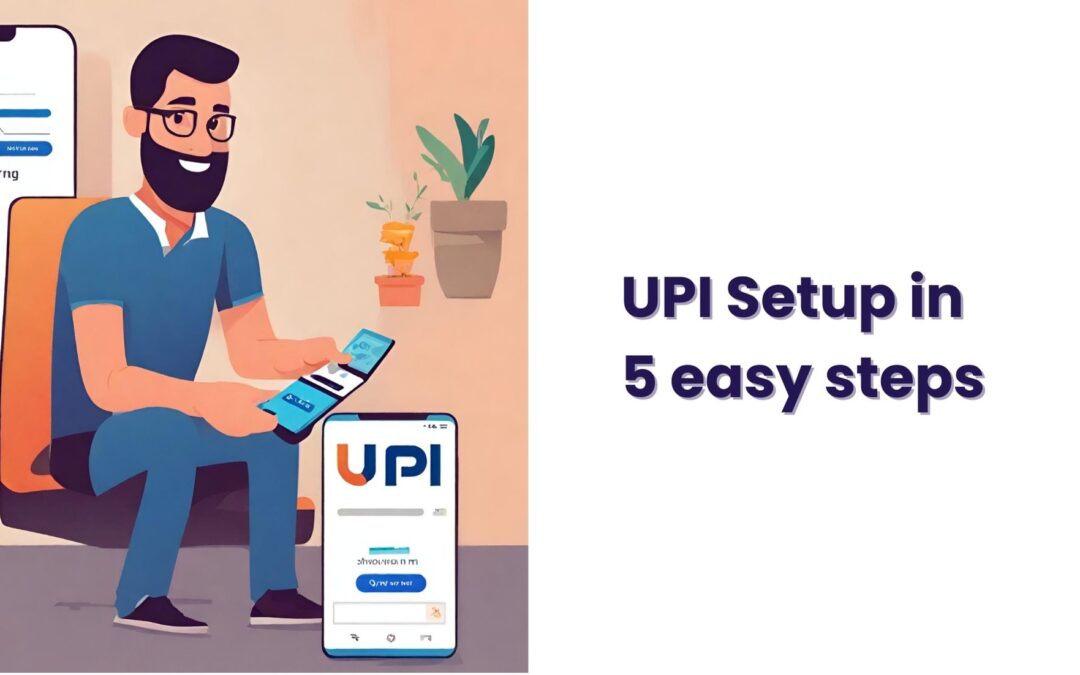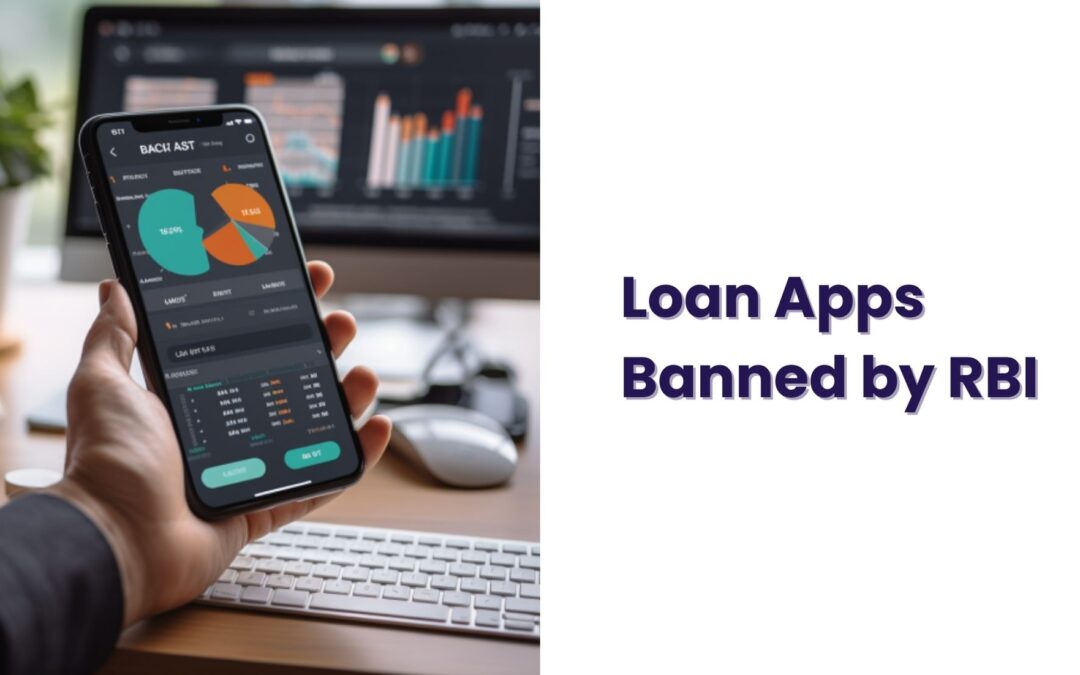
by Toulika | Jan 2, 2024 | Investment
Unified Payments Interface (UPI) has transformed the way we transact digitally. From simplifying payments to ensuring secure transactions, UPI has become the go-to platform for millions. If you’re new to this, worry not! This article will walk you through the UPI Setup in 5 easy steps, making your transition smooth and hassle-free.
Do you want to know how to setup your UPI? This is the perfect article that you are looking for. On a side note, if you are looking for a place to save some money in, digital gold might just be the perfect fit for you! Explore new possibilities by downloading the Jar App.
Understanding the Basics of UPI
Before diving into the setup process, it’s essential to grasp the basics of UPI. Developed by the National Payments Corporation of India (NPCI), UPI enables instant fund transfers between bank accounts. With its user-friendly interface and real-time transfer capabilities, UPI stands out as a reliable payment system.
Benefits of UPI Setup
Why opt for UPI? The benefits are manifold. Firstly, it offers unparalleled convenience, allowing users to make transactions round the clock. Additionally, UPI eliminates the need for cumbersome bank details, making transactions swift and effortless. Furthermore, with features like QR code payments and bill splitting, UPI enhances user experience, making it a preferred choice for many.
Step 1: Choosing the Right UPI App
Embarking on your UPI journey begins with selecting the right app. With numerous applications available, opt for one that aligns with your requirements. Consider factors like user interface, security features, and compatibility with your bank. Once you’ve made your choice, download the app and proceed to the next step.
Step 2: Registration Process
With the app installed, it’s time to register. Launch the application and follow the on-screen instructions. Typically, you’ll be required to enter your mobile number linked to your bank account. Upon verification, create a unique UPI ID, ensuring it’s easy to remember yet secure.
Step 3: Linking Bank Accounts
The next crucial step involves linking your bank account to the UPI app. Navigate to the ‘Add Bank Account’ section, select your bank, and verify using your debit card details. Once linked, set a secure PIN to authenticate transactions. Remember, safeguarding your bank details is paramount; hence, exercise caution while entering sensitive information.
Step 4: Setting Up Security Measures
Security remains a top priority in digital transactions. Ensure you enable multi-factor authentication and regularly update your UPI PIN. Additionally, refrain from sharing your UPI ID or OTP with anyone. By adhering to these security protocols, you can safeguard your finances and enjoy a seamless transaction experience.
Step 5: Initiating Your First Transaction
With everything set up, it’s time to initiate your first transaction. Whether you’re transferring funds or making a payment, ensure you enter the correct UPI ID or scan the QR code accurately. Double-check the transaction details before confirming, ensuring a smooth and error-free process.
Common Mistakes to Avoid in UPI Setup
While setting up UPI, avoid common pitfalls like sharing OTPs, using weak UPI PINs, or neglecting security updates. Additionally, refrain from storing sensitive information on shared devices. By exercising caution and staying informed, you can navigate the UPI landscape confidently.
Security Concerns with UPI
While UPI offers a secure platform, it’s essential to remain vigilant. Regularly monitor your transaction history, enable notifications for transaction alerts, and report any suspicious activity immediately. By adopting these practices, you can mitigate potential risks and safeguard your financial data.
UPI Setup for Business Owners
For business owners, UPI offers a myriad of opportunities. From streamlining payments to enhancing customer experience, integrating UPI into your business can yield significant benefits. Explore features like bulk payments, invoice generation, and real-time settlements to optimize your operations and drive growth.
Comparison: UPI vs. Traditional Payment Methods
When juxtaposed with traditional payment methods, UPI emerges as a frontrunner. Offering speed, convenience, and security, UPI outshines traditional modes like cash or card transactions. Embrace UPI to enjoy faster settlements, reduced transaction fees, and enhanced operational efficiency.
There is another option where you can automate your regular payments with just one click – it is called “autopay”. Know more about autopay here.
Future Trends in UPI
As technology evolves, so does UPI. Anticipate advancements like voice-enabled transactions, AI-driven insights, and enhanced security features in the coming years. Stay abreast of these developments to leverage UPI’s full potential and stay ahead of the curve.
Conclusion: Mastering UPI Setup
In conclusion, mastering UPI Setup in 5 easy steps can revolutionize your payment experience. By understanding the basics, implementing security measures, and leveraging its myriad benefits, you can navigate the digital payment landscape with confidence. Embrace UPI today and embark on a seamless transaction journey.
Frequently Asked Questions (FAQs) about UPI Setup
How secure is UPI for transactions?
UPI transactions are designed with robust security measures to ensure the safety of your funds. With features like multi-factor authentication, encrypted data transfer, and secure PIN verification, UPI prioritizes user security. However, it’s essential to remain vigilant and avoid sharing sensitive information like OTPs or UPI PINs with anyone.
Can I link multiple bank accounts to a single UPI ID?
Yes, one of the advantages of UPI is the ability to link multiple bank accounts to a single UPI ID. This feature offers flexibility, allowing users to manage transactions from various accounts seamlessly. However, ensure you maintain the security of each linked account and monitor transactions regularly.
What should I do if I forget my UPI PIN?
If you forget your UPI PIN, most applications provide an option to reset it. Navigate to the ‘Forgot UPI PIN’ section within the app, follow the on-screen instructions, and verify your identity through registered mobile number or email. Once authenticated, set a new UPI PIN and ensure it’s unique and secure.
Are there any transaction limits on UPI?
Yes, UPI imposes transaction limits to ensure user security and prevent fraudulent activities. These limits vary based on the UPI app and bank, ranging from daily transaction limits to per transaction limits. It’s advisable to check your bank’s UPI guidelines or app settings to understand these limits and plan your transactions accordingly.
How do I update my UPI app?
Updating your UPI app is crucial to access the latest features, security patches, and enhancements. Navigate to your device’s respective app store, search for your UPI app, and click on the ‘Update’ button if available. Additionally, enable automatic updates to ensure your app remains current and secure.
Is UPI available internationally?
As of now, UPI primarily operates within India, facilitating domestic transactions between Indian bank accounts. While there have been discussions about expanding UPI’s reach internationally, it’s essential to note its current scope is limited to domestic transactions. Stay tuned for updates on UPI’s global expansion and explore alternative payment methods for international transactions.

by Toulika | Dec 28, 2023 | Culture & Money, Investment, Savings
Loan rates are more than just numbers on a chart; they represent the heartbeat of a nation’s economy. Understanding their significance requires a closer look at their role in shaping economic policies, consumer behaviors, and financial markets.
Do you know that you can opt for a completely safe digital gold savings platform to save your money in 24k digital gold? Tap here to download the Jar App.
Understanding the Importance of Loan Rates
Loan rates serve as a vital economic indicator, reflecting the supply and demand dynamics of money in an economy. They influence borrowing and spending patterns, investment decisions, and overall economic growth.
The Role of Loan Rates in Economic Landscape
In India, loan rates play a pivotal role in determining the cost of borrowing for individuals and businesses alike. They influence sectors like real estate, manufacturing, and services, thereby impacting employment, inflation, and economic stability.
Historical Perspective
To make informed predictions about the future, one must delve into the past. By examining historical trends, we gain valuable insights into the factors shaping loan rates over the years.
Over the decades, India has experienced various economic phases, each leaving its mark on loan rates. From liberalization in the 1990s to economic reforms and global crises, these events have significantly influenced interest rates.
Significant Events and Their Impacts
Events like the 2008 global financial crisis, demonetization in 2016, and recent COVID-19 pandemic have had profound impacts on India’s loan rates, leading to policy interventions and market adjustments.
Current Scenario
The present-day rate landscape in India is a reflection of the country’s economic recovery efforts, policy measures, and global economic conditions.
Analyzing the Present-Day Loan Rates
Currently, India is navigating a complex economic environment marked by inflationary pressures, fiscal deficits, and liquidity challenges. These factors contribute to varying rates across sectors.
Recent Developments and Trends
Recent trends indicate a cautious approach by financial institutions, with some sectors witnessing rate reductions while others remain stable or slightly elevated due to risk considerations.
Predictions for 2024
As we approach 2024, the million-dollar question remains: Will loan rates decrease?
Forecasting the Future: Will Rates Decrease?
While the economic outlook suggests potential rate adjustments, several variables, including inflation, GDP growth, and RBI policies, will shape the trajectory of loan rates in 2024.
Expert Opinions and Economic Indicators
Financial experts and economists offer diverse opinions, with some forecasting rate reductions based on favorable economic indicators, while others emphasize caution due to inflationary pressures and global uncertainties.
Economic Indicators
Understanding key economic metrics is essential when analyzing lending rates and their potential future movements.
Delving into Key Economic Metrics
Metrics such as GDP growth rates, inflation levels, unemployment rates, and fiscal deficits provide valuable insights into India’s economic health and its implications for loan rates.
RBI’s Role and Monetary Policies
The RBI’s monetary policies, including repo rates, reserve requirements, and liquidity measures, play a crucial role in influencing loan rates by regulating money supply, inflation, and overall economic stability.
Global Influences
In an interconnected global economy, international factors significantly impact India’s lending rates and overall economic landscape.
Assessing International Factors and Impacts
Global economic conditions, trade agreements, geopolitical events, and international monetary policies can indirectly influence India’s loan rates, creating both challenges and opportunities for policymakers and market participants.
Consumer Impact
Amidst fluctuating rates for lending, borrowers must adopt strategic approaches to manage their financial obligations effectively.
Strategies for Borrowers Amidst Fluctuations
Borrowers can navigate the complexities of fluctuating rates for lending by understanding market dynamics, maintaining a strong credit profile, exploring alternative financing options, and seeking expert financial advice.
Practical Tips and Recommendations
From refinancing existing loans to diversifying borrowing sources and negotiating favorable terms with lenders, proactive strategies can help borrowers minimize costs and mitigate risks associated with volatile loan rates.
Conclusion
In conclusion, predicting loan rates in 2024 requires a multifaceted analysis of economic, domestic, and global factors. While expert opinions provide valuable insights, staying informed, adaptable, and proactive is essential for borrowers, policymakers, and market participants alike.
FAQs
How do RBI policies impact loan rates?
The RBI’s monetary policies, including repo rates, directly influence rates for lending in India by regulating money supply, inflation, and economic stability.
What role do global economic conditions play in determining loan rates?
Global economic factors, such as trade agreements, geopolitical events, and international monetary policies, indirectly influence India’s rates for lending.
How can borrowers prepare for fluctuating loan rates?
Borrowers can prepare by understanding market dynamics, maintaining a strong credit profile, exploring alternative financing options, and seeking expert financial advice.
Are there any specific economic indicators to watch when predicting rates for lending?
Yes, key economic indicators like GDP growth rates, inflation levels, unemployment rates, and fiscal deficits offer valuable insights into India’s economic health and loan rate movements.
What are experts saying about loan rates in 2024?
Financial experts offer diverse opinions, with some forecasting rate reductions based on favorable economic indicators, while others emphasize caution due to inflationary pressures and global uncertainties.

by Toulika | Dec 28, 2023 | Culture & Money, Savings
In India’s burgeoning financial ecosystem, credit types wield immense significance. Grasping the intricacies of such types equips you to make informed decisions, navigate financial avenues, and harness opportunities aligned with India’s unique financial dynamics.
Do you want to save money in 24k digital gold? Download the Jar App now.
Understanding Different Credit Types
Embarking on India’s credit journey mandates discerning diverse credit types. Secured credit revolves around collateral, resonating with Indian traditions of security-based lending. Conversely, unsecured credit pivots on creditworthiness, mirroring modern Indian aspirations. Revolving credit epitomizes flexibility, while installment credit aligns with structured financial obligations, echoing Indian fiscal prudence.
Benefits of Various Credit Types
India’s diverse credit landscape proffers myriad benefits. Secured credits often proffer favorable interest rates, resonating with India’s value-centric financial ethos. Unsecured credits empower aspirations without tethering assets. Meanwhile, installment credits facilitate structured repayments, fostering financial discipline and stability.
Potential Risks and Pitfalls
Navigating India’s credit realm necessitates vigilance amidst latent pitfalls. Impulsive credit utilization may culminate in insurmountable debt burdens. Unsecured credits, though enticing, may escalate repayment challenges due to inflated interest rates. Prudent navigation safeguards your financial sanctity amidst India’s dynamic fiscal milieu.
Credit Types and Your Financial Goals
Strategically aligning these with India-centric financial aspirations crystallizes your path to prosperity. Whether targeting real estate investments, educational pursuits, or entrepreneurial ventures, astute selection amplifies financial efficacy and resilience.
Credit Types and Interest Rates
Mastering India’s credit intricacies mandates comprehension of Annual Percentage Rates (APRs). Varied types encompass divergent interest regimes, profoundly influencing your borrowing costs and financial trajectories. Acumen in these nuances fortifies fiscal acuity amidst India’s vibrant economic landscape.
Managing Multiple Credit Types
Harmonizing diverse types necessitates adept management strategies. Prioritize timely repayments, monitor credit utilization ratios, and leverage consolidation avenues, embodying India’s pragmatic financial stewardship. Comprehensive management strategies bolster financial resilience and prosperity.
Credit Types for Various Life Stages
India’s multifaceted socio-economic tapestry predicates varied credit requisites across life stages. Youthful endeavors may pivot around credit establishment, while midlife considerations encompass mortgages, investments, and familial obligations. Nearing retirement, judicious credit management augments financial tranquility and legacy planning.
Evolution of Credit Types Over Time
Tracing India’s credit evolution unveils a tapestry of economic, technological, and societal influences. From traditional lending paradigms to digital fintech innovations, understanding this evolution empowers you to harness future trends and opportunities.
Credit Types and Economic Factors
India’s economic dynamism intricately interweaves with credit ecosystems. Interest rate fluctuations, inflationary trends, and policy dynamics sculpt credit availability, terms, and conditions. Adapting adeptly to these nuances crystallizes fiscal agility and resilience, resonating with India’s vibrant economic fabric.
Comparing Different Credit Types
Conducting a nuanced comparative analysis elucidates India-centric nuances. Scrutinize terms, interest structures, and repayment modalities, enabling judicious selection congruent with your financial aspirations, cultural values, and lifestyle preferences.
Conclusion and Final Thoughts
Embarking on India’s credit odyssey mandates astute understanding, strategic planning, and cultural resonance. Empowered with insights into the types, India-centric nuances, and fiscal acumen, you navigate India’s intricate financial landscape with confidence, forging a pathway to prosperity, stability, and legacy.
FAQs
What is the best credit type for me in India?
Evaluate your financial goals, risk tolerance, and cultural context to discern optimal types resonating with India’s vibrant financial landscape.
How do credit types impact my Indian credit score?
They influence credit utilization, repayment history, and account diversity, collectively shaping your Indian credit score and financial credibility.
Can I transition between credit types in India?
Yes, adapting these types mandates assessing evolving financial circumstances, liaising with Indian financial institutions, and navigating requisite transitions adeptly.
What are the inherent risks of different credit types in India?
Risks encompass fluctuating interest rates, potential debt accumulation, and socio-economic vulnerabilities intrinsic to specific types prevalent in India.
How do Indian economic factors influence credit types?
Economic variables, encompassing interest rate dynamics, inflationary pressures, and regulatory shifts, profoundly shape credit availability, terms, and conditions within India’s dynamic financial ecosystem.
How can I manage multiple credit types efficiently in India?
Prioritize timely repayments, monitor credit utilization, leverage Indian financial tools, and adopt culturally resonant financial strategies to efficaciously navigate diverse credit obligations.

by Toulika | Dec 28, 2023 | Culture & Money, Savings
Over the past few years, India witnessed an explosion in the popularity of loan apps. Designed to provide quick financial solutions, these apps lured users with promises of instant loans with minimal documentation. Their rise was meteoric, with millions of users seeking immediate financial relief.
Do you want to save money in a secure digital platform? Download and save on the Jar App now.
The Rise of Loan Apps: A Brief Overview
The allure of quick cash transformed the financial ecosystem. With just a few taps on a smartphone, users could access funds. These apps catered to a wide audience, from college students facing tuition fees to entrepreneurs requiring working capital. The convenience they offered was unparalleled.
Loans Apps Banned by RBI: A Growing Concern
However, beneath this facade of convenience lay a darker reality. As complaints mounted, stories of harassment, astronomical interest rates, and predatory lending practices came to light. This growing concern caught the attention of regulatory authorities, leading to swift action.
Understanding RBI’s Regulatory Role
The Reserve Bank of India (RBI), as India’s premier banking institution, holds the mandate to ensure financial stability and protect consumers. Recognizing the potential risks posed by unregulated loan apps, RBI initiated stringent regulatory measures.
Factors Leading to the Ban
Several factors precipitated this regulatory intervention. First, rampant illegal lending practices jeopardized consumer interests. Second, the absence of a robust framework allowed nefarious entities to exploit vulnerable users. Third, the surge in default rates posed systemic risks to the financial ecosystem.
The Impact on Borrowers
The ban had a profound impact on borrowers. Many found themselves ensnared in debt traps, grappling with exorbitant interest rates and punitive measures. The ban aimed to safeguard these vulnerable consumers, offering them a respite from relentless debt cycles.
Identifying Illegal Loan Apps
Distinguishing between legitimate and illegal loan apps became paramount. Illicit apps often operated without requisite licenses, employing aggressive tactics to lure unsuspecting users. Consumers needed to exercise caution and conduct due diligence.
Several red flags signaled unauthorized platforms. Lack of transparent terms, absence of physical addresses, and dubious customer reviews were telltale signs. Consumers should approach such platforms with extreme caution.
RBI’s Actions Against Fraudulent Apps
RBI’s response was both swift and decisive. The institution levied penalties on errant apps, forcing many to shut down operations. This crackdown sent a clear message: fraudulent activities would not be tolerated.
How Consumers Can Protect Themselves
Education emerged as the most potent weapon against predatory lending. Consumers must research apps thoroughly, scrutinize terms and conditions, and seek expert advice before engaging with any platform.
Legal Consequences for Defaulters
Defaulting on loans carried severe repercussions. Borrowers faced legal actions, tarnished credit scores, and financial hardships. Understanding one’s obligations and rights became crucial in navigating this complex landscape.
The Road Ahead: Strengthening Regulatory Mechanisms
Enhancing Collaboration with International Partners
To address the transnational nature of gambling and money laundering activities, there is a need to strengthen collaboration with international partners. Sharing intelligence, best practices, and technological solutions will enable the effective implementation of regulatory measures, mitigating risks and enhancing cybersecurity.
Empowering Consumers through Awareness Campaigns
Empowering consumers through awareness campaigns and educational initiatives is crucial to fostering a culture of responsible digital citizenship. By promoting ethical practices and encouraging vigilance against fraudulent activities, we can create a resilient and inclusive digital environment that upholds the principles of integrity, transparency, and accountability.
The ban on 232 foreign apps represents a pivotal step in addressing the escalating challenges posed by gambling and money laundering. By adopting a comprehensive and proactive approach, we can safeguard the economic interests and moral values of our society, fostering a secure, transparent, and inclusive digital ecosystem for future generations.
The Future of Digital Lending in India
Despite the ban, the future of digital lending remains promising. Innovators are now focusing on ethical, transparent solutions, fostering a culture of responsible lending and consumer protection.
Alternatives to Loan Apps Post-Ban
Traditional banking channels and peer-to-peer lending platforms offer viable alternatives. Consumers must explore these avenues cautiously, prioritizing transparency and ethical practices.
Conclusion: Moving Forward Safely
The ban on loan apps by RBI serves as a wake-up call for all stakeholders. By prioritizing consumer protection, ethical practices, and regulatory compliance, India can build a resilient, inclusive financial ecosystem.
Recommendations for Borrowers
Borrowers must prioritize due diligence, read terms meticulously, seek expert advice, and remain vigilant. Responsible borrowing and informed decision-making are crucial in navigating the complex financial landscape.
Resources and Helplines
For more information, resources, and assistance, visit RBI’s official website, consult with financial advisors, or contact local consumer helplines. Knowledge is power; arm yourself with information.
Loans Apps Banned by RBI: Frequently Asked Questions
How to Report Suspicious Loan Apps?
Report suspicious apps to RBI’s helpline or local authorities immediately. Timely intervention can prevent further harm and protect vulnerable users.
Is There Any Way to Recover Lost Money?
While recovering lost money can be challenging, legal avenues exist. Victims should consult legal experts, gather evidence, and pursue appropriate remedies.
What Are the Signs of a Legitimate Loan App?
Legitimate apps exhibit transparent terms, clear repayment structures, positive customer reviews, and a physical presence. Users should verify credentials and exercise due diligence.
How Will This Impact the Digital Economy?
The ban aims to foster a sustainable digital economy by curbing illicit activities, promoting trust, and encouraging ethical practices. It underscores the need for regulatory vigilance and consumer education.
What Are Other Countries Doing About This?
Globally, regulators are tightening oversight on fintech platforms, adopting stringent measures to protect consumers and maintain financial stability. Collaboration and knowledge-sharing are essential in this global fight against fraud.

by Toulika | Dec 27, 2023 | Investment, Savings
Navigating the intricacies of the Indian financial landscape, particularly when contending with loans for low CIBIL score, presents a unique set of challenges and considerations for individuals seeking credit facilities. In a nation where creditworthiness is often synonymous with opportunities, understanding the nuances of securing loans becomes paramount.
This guide delves into the multifaceted realm of loan options available to Indian consumers with a less-than-optimal CIBIL score, shedding light on tailored lending solutions, strategies for score enhancement, and essential precautions. Embark on this comprehensive journey to empower your financial decisions, ensuring informed choices aligning with your aspirations and fiscal well-being. On a side note, do you want to save your money in 24k digital gold? Download the Jar App now.
Understanding the CIBIL Score in the Indian Context
In India, the Credit Information Bureau (India) Limited, commonly known as CIBIL, evaluates an individual’s creditworthiness. This score, ranging from 300 to 900, is pivotal for loan approvals. A score below 600 often poses challenges in accessing credit facilities.
Why is a Low CIBIL Score Problematic in India?
- Limited Lender Trust: Banks and financial institutions prioritize higher CIBIL scores, viewing them as a testament to reliability.
- Elevated Interest Rates: A low score often translates to increased interest rates, making loans more expensive.
- Reduced Loan Amounts: Lenders might offer reduced loan amounts to mitigate risks associated with a lower CIBIL score.
Tailored Loan Solutions for Indian Consumers
1. Microfinance Institutions: MFI’s in India cater to individuals with low CIBIL scores, offering smaller loan amounts with manageable repayment terms.
2. Gold Loans: Given India’s cultural affinity for gold, many institutions provide gold-backed loans. These loans require gold as collateral, easing the approval process.
3. Digital Lending Platforms: Emerging fintech companies specialize in offering loans based on alternative credit assessment metrics, bypassing traditional CIBIL score reliance.
Strategies to Improve Your CIBIL Score
- Timely Repayments: Ensuring prompt repayment of existing debts positively impacts your CIBIL score.
- Limiting Credit Utilization: Maintaining a balanced credit utilization ratio showcases responsible financial behavior.
- Regular CIBIL Monitoring: Stay updated with your credit report, rectifying errors promptly to enhance your score.
Beware of Loan Scams in India
While navigating loans with a low CIBIL score, vigilance is paramount. Several fraudulent entities exploit vulnerable individuals, promising loans but imposing exorbitant rates and hidden charges.
Conclusion: Navigating Loans with a Low CIBIL Score in India
For Indian consumers grappling with a low CIBIL score, viable loan options exist. By leveraging specialized lending institutions, maintaining financial discipline, and avoiding predatory practices, individuals can access credit facilities tailored to their needs.
FAQs on loans for low CIBIL Score
What is considered a low CIBIL score in India?
In the Indian lending landscape, a CIBIL score below 600 is generally perceived as low. This score reflects potential credit risks to lenders, indicating a history of missed payments, defaults, or high credit utilization. Individuals with scores in this range may encounter challenges securing traditional loans from major banks or financial institutions.
Can I secure a personal loan with a low CIBIL score in India?
While a low CIBIL score presents challenges with traditional lenders, securing a personal loan in India remains feasible through alternative avenues. Options include approaching Microfinance Institutions (MFIs) that cater to individuals with lower scores or exploring digital lending platforms. These platforms often employ unique credit assessment methodologies, considering factors beyond the CIBIL score, such as income stability and employment history.
How frequently should I check my CIBIL score in India?
In India’s dynamic financial landscape, monitoring your CIBIL score is pivotal, especially before significant financial undertakings. Ideally, individuals should review their CIBIL report annually to ensure accuracy and identify any discrepancies. Furthermore, before applying for loans or credit cards, checking your score and rectifying any inaccuracies can enhance your loan approval chances and terms.
Are gold loans a viable option for individuals with a low CIBIL score in India?
Absolutely, gold loans emerge as a viable solution for individuals grappling with a low CIBIL score in India. Given the nation’s cultural and financial affinity towards gold, numerous institutions offer gold-backed loans. By pledging gold as collateral, borrowers mitigate lender risks, facilitating loan approval despite a less-than-optimal CIBIL score. However, borrowers should remain diligent, understanding terms, interest rates, and repayment obligations associated with gold loans.
How can I avoid loan scams while seeking credit with a low CIBIL score in India?
Navigating the lending landscape with a low CIBIL score in India necessitates heightened vigilance to evade potential scams. To safeguard your financial interests:
- Research Extensively: Prioritize reputable lending institutions with a proven track record and positive customer feedback.
- Verify Lender Credentials: Ensure the lender possesses valid licenses and operates within regulatory frameworks.
- Read Agreements Thoroughly: Scrutinize loan terms, conditions, interest rates, and associated fees. Seek clarity on ambiguous clauses or terms.
- Avoid Upfront Fees: Be wary of lenders demanding hefty upfront fees or payments before disbursing the loan amount.
- Consult Financial Advisors: Engage with financial experts or advisors to gain insights, validate loan offers, and make informed decisions, safeguarding against potential scams and fraudulent activities.





